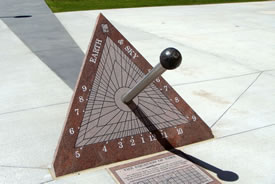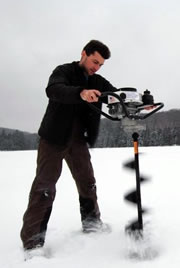It all adds up: The surprising variety of ways conservation scientists use math daily

Geometry lessons (Photo by Wikimedia Commons, KUHT)
A recent report by the Organization for Economic Development and Co-Operation found that Canadian students have slipped out of the top-10 list of countries with the highest math scores. This has implications for all Canadian professions, not simply those that are math-focused such as engineering and accounting. Some conservationists may choose their profession because of their passion for the natural world, and maybe also because it offers a career where math is not the focus. But in fact, math is also important to conservation. The Nature Conservancy of Canada (NCC) is no exception.
Conservation practitioners use math to calculate the area or width of habitat types on properties that we manage or are seeking to protect. We also measure distance between features, particularly between properties or parks that we are looking to connect by protecting the lands between them, but also things like fence lines, buildings or other structures. We often work with American partners and therefore need to convert all sorts of units of measure between imperial and metric systems, particularly acres and hectares, kilometres and miles.

Equatorial sundial (Photo by Carmichael)
Even our conservation planning involves calculations. First, we estimate the viability of our biodiversity targets and the magnitude of the threats facing them. Then, we use simple algorithms to calculate the overall threats facing our targets, which help us to focus our limited conservation resources on biodiversity features in greatest need. And of course, we routinely calculate budgets for how our resources will be spent on conservation — an essential skill in any profession.
Conservation + math, primed
For specific projects, more advanced analytical skills are required. Some of our practitioners develop this skill set, and in other instances we collaborate with academic conservation biologists who are conducting research to help inform our efforts to protect biodiversity. For example, we may calculate the viability of a population of a species at risk and estimate how various threats or actions might affect this viability. We may also be interested in understanding environmental impacts of threats, which involves math at many stages — from designing a monitoring program to preparing and analyzing data using simple and advanced statistics.
Similarly, statistics can be used to evaluate the effectiveness of ecological restoration techniques, helping us to focus our resources on restoration strategies that offer the greatest benefits. In other cases, we may need to estimate the extent of a biodiversity target that must be protected to ensure its long-term sustainability. For instance, if we protect 30 percent of the wetlands in a landscape, is that enough to provide habitat for wetland species such as frogs and salamanders? What about 40 percent? Often, the exact amount is unknown but conservation biologists are becoming skilled at calculating how certain we are of a given number. This helps to inform management decisions of whether to be precautionary in deciding how much of something must be protected.
Finally, working across vast landscapes involves collecting large amounts of data, including maps housed in Geographic Information Systems (GIS) databases. With extensive data on the distribution of biodiversity features and the threats that face them, we can use more complex models to figure out which locations have the greatest biodiversity value and should be made a priority for protection. We can also identify potential corridors for animal movements that should be protected to ensure long-term viability of populations across a landscape and among otherwise isolated protected areas.
Don't let the numbers fool you
Budding conservation biologists who do not consider math to be their strong suit should not shy away from advanced careers in this field as a result. I myself struggle with mathematical concepts beyond the high school level (and to be honest, even senior high school math), but today most analyses are conducted using software developed for this purpose. This shifts the burden of the practitioner from having to wade through complex equations to instead having to understand the assumptions behind each technique, and how and when to use them properly — something that I find far more intuitive and easy to grasp. This ability, along with a strong foundation in basic math skills, has served me well as a conservation biologist, even if I am still challenged by more complex math.


